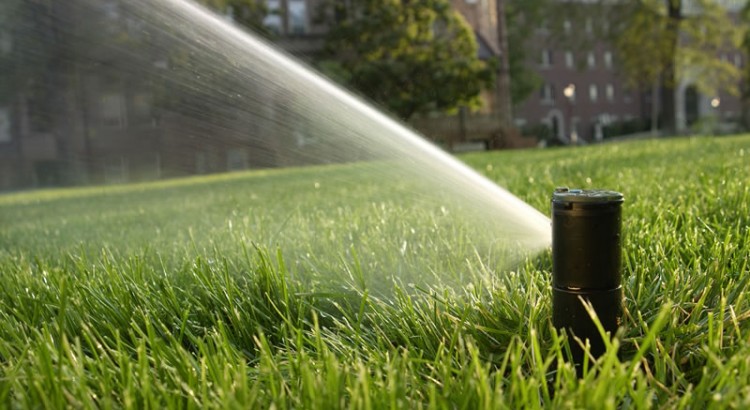Many homeowners will make the mistake of watering their lawn too often, causing the lawn to grow shallow roots that dry out quickly. When the heat of summer comes, it can become impossible to keep your lawn from going dormant.
- Water an inch at a time
To encourage your lawn to grow deep roots, it’s important to put down an inch of water all at once. This will saturate the soil and cause the roots to grow deep to soak it all in. Ideally you should have already begun doing this in the spring time, so the roots are already growing nice and deep.
- Hand watering may be necessary
Many times the roads, driveways, and side walks will become hot and dry out the lawn bordering them. If that happens, it’s important to hand water those areas. You don’t want the entire lawn becoming dependent on frequent watering when it’s only those problem areas that need it.
- Use Weather Underground
When it rains it’s easy to think your lawn has had enough water, but unless you have a rain gauge you won’t really know. I prefer to use Weather Underground to monitor local weather stations my neighbors have installed to see exactly how much rain I’ve received. One storm I received 1/10th of an inch of water, when friends not too far from me had and inch of rainfall. If I went by what they said my lawn would have gone dormant, but instead I watered that day to make sure it had enough water for the week.
- Learn your Lawn’s Signs
If you pay attention to your lawn, ideally you should water when it starts to show signs of needing water. You’ll see a slight change in the hue of your grass, almost like it’s a blue/gray color. You may also notice the blades starting to curl or wilt. This is when you need to water, or your lawn will start to go dormant.
- Tip #5: Go with the flow
Depending on your grass type, soil type, temperatures, etc, you may need to water more frequently than once a week. For instance, I switch to watering twice a week during the hot summer months because of water restrictions. I can’t water my lawn every 4-5 days when it needs it, so instead I’ll water it twice a week. I’ll also adjust how much I water based on rainfall, temperature, and whether my lawn’s signs are telling me it needs more water. The key is to watch your lawn’s signs, and try to water as much as possible every time it needs it, so the roots grow strong and vigorous.
